Posts Tagged: color
Flying High, Flying Free
An American flag flies from its sky-high pole at our home year-around. A U.S. Air Force veteran lives here, and the survivors of generations of...
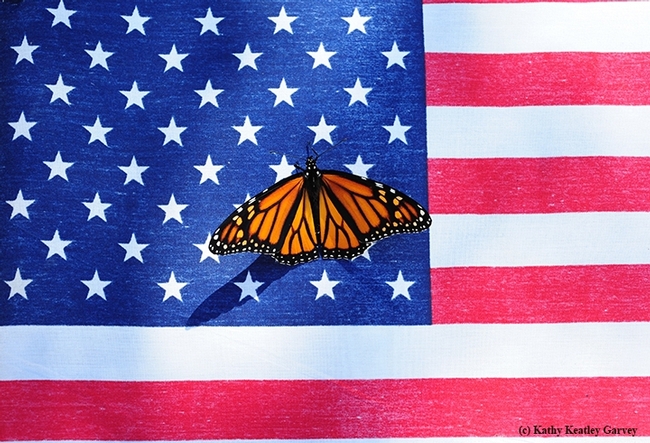
A monarch butterfly, Danaus plexippus, flutters on the American flag. (Photo by Kathy Keatley Garvey)
Of Butterfly Patterns and Genetic Codes
Who knew? You've probably watched those colorful painted ladies (Vanessa cardui) fluttering about in your yard, but have you read the newly...
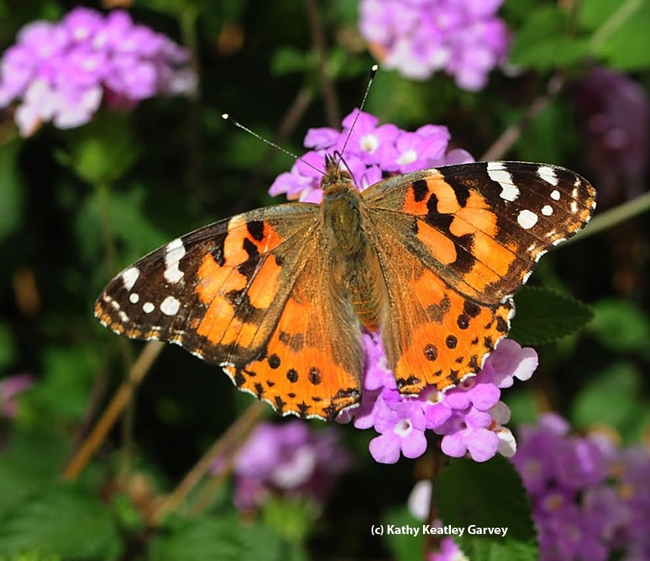
A painted lady, Vanessa cardui, on lantana in Vacaville, Calif. Now researchers at the University of Manitoba have identified the genetic code by which butterflies can assign color patterns to different parts of their wings during development. (Photo by Kathy Keatley Garvey)
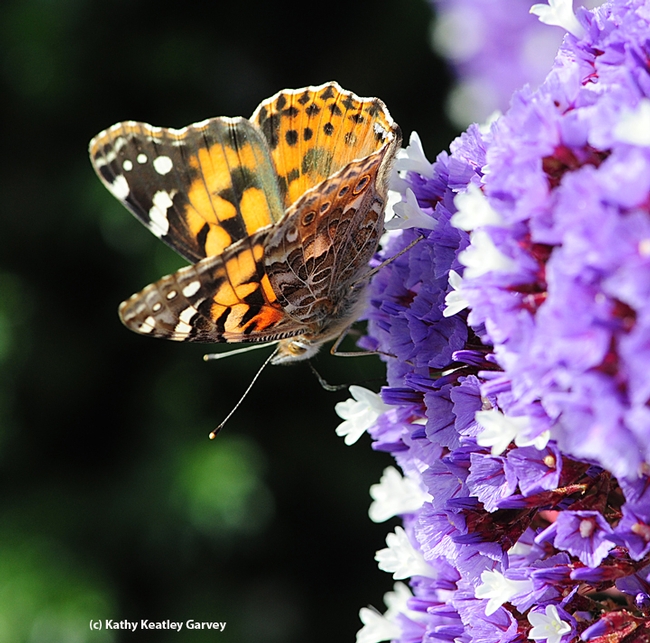
A painted lady, Vanessa cardui, nectaring on lantana in Vacaville, Calif. (Photo by Kathy Keatley Garvey)
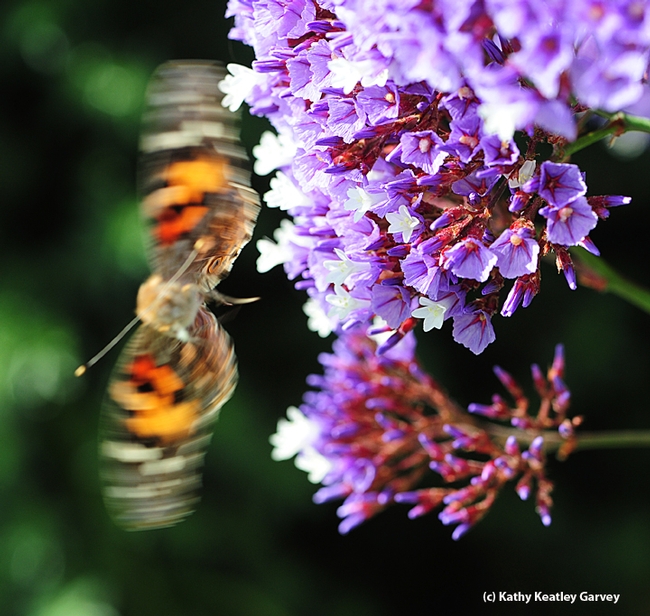
The presence of a predator startles a painted lady, Vanessa cardui. (Photo by Kathy Keatley Garvey)
Zinnias: One of My Favorite Cut Flowers
Zinnias are from the family Asteraceae, and there are many species. The most familiar, Zinnia elegans, is originally from Mexico, and is therefore sun and heat loving plant that grows up to 3’ high.
They have become one of my favorites for cutting because of their intense and varied colors, which make it perfect for a tabletop vase.
I have them planted right now in one of my 4x4’ mini farm boxes, and they have been doing very well for the past two months after a slow start. I put in 6-6 packs of the State Fair Mix last May. The young starts took hold, but showed signs of fertilizer burn for the first 6-8 weeks, which now in retrospect makes sense because of the fresh bagged potting soil they were planted in. However, now, they have more than compensated for their earlier malaise, as they have almost outgrown their container. I pick enough weekly to have a fresh arrangement or two for the house, or to give away. Cuts are made about 12 inches down, but above the side shoots, which will allow new blooms to grow.
This time of year some of the lower leaves have powdery mildew, from too many overcast mornings in Sunset Zone 17, and in spite of hot afternoon sun. However, this is not a problem, since most of the leaves are stripped when they are brought in for arrangements.
For strictly ornamental garden beds, dwarf zinnias (Zinnia angustifolia) look great for instant color, and also as a butterfly attractant. They come in brilliant colors of orange, yellow and white, and they are more resistant to powdery mildew. Mixed with pockets of electric blue Lobelia (Lobelia erinus), they make a stunning garden display.
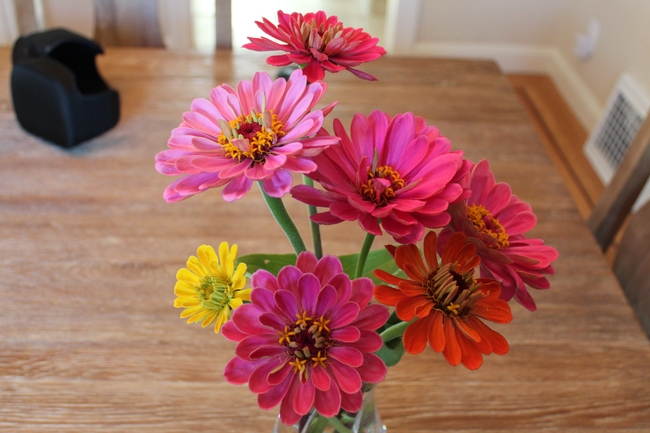
Zinnia elegans. (photos by Bud Veliquette)
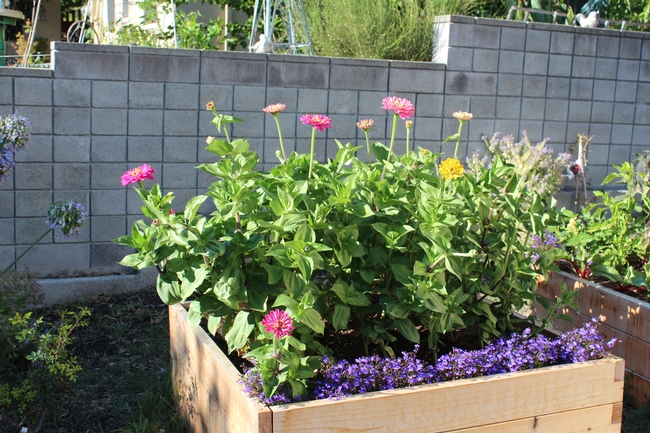
Mini farm box chock full of zinnia and lobelia.
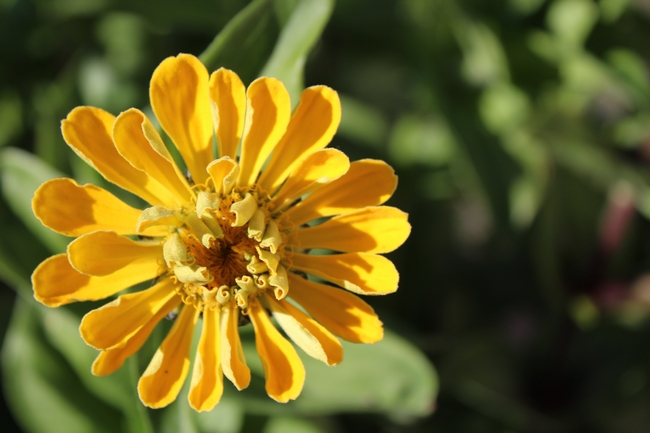
IMG 1129
The Maidenhair Tree
By Kathy Thomas-Rico
From where I sit, I have a bird’s-eye view of the changing leaf colors that fall brings. Who says California doesn’t have autumnal color? Vacaville’s stately evergreens — oaks, redwoods, Italian cypress, even palms — are getting some colorful competition from the Chinese pistache, liquidambars and ‘Raywood’ ashes.
Alas, nothing yet from the ginkgos, what some folks call maidenhair trees. Patience pays off with these trees; the colorful show will come a little later in autumn. If you are in the market for a showstopper of a tree, one that’s rather slow growing and pest resistant, a visit to the nursery to look at ginkgos is in order. If your yard is not huge, consider a dwarf or semi-dwarf variety, as full-sized ginkgos can reach 80 feet in height. And make sure you pick out a male ginkgo; female trees produce messy, smelly fruit.
Here are some examples, which should be available regionally. Check online for availability:
‘Jade Butterfly’ — Large, scalloped leaves are divided almost in two in the center evoking the image of fluttering butterflies. As a semi-dwarf ginkgo, one can expect a height of 9-12 feet in about 10 years — less if grown in a container.
‘Jehosephat’ — Very dense and very slow growing. Expect a height of 6-8 feet in 10 years. Height, as with all dwarf and semi-dwarf ginkgos, is variable depending on climate, soil conditions, fertilizer.
‘Mariken’ — This unique ginkgo naturally grows in a tight, globe shape. It is a dwarf yet has a typical leaf size.
‘Munchkin’ — Tiny leaves and twiggy branches. Munchkin is slow growing to around 3 feet in 10 years. This may be the smallest growing of the dwarf ginkgos.
‘Shangri-La’ — A fine, upright growing male variety with golden fall foliage.
‘Thelma’ — New compact form. Some leaves emerge fringed, some are rolled. The same tree will display lacy foliage right next to small, rolled leaves. Thelma is pretty wild.
‘Troll’ — Small, deep green foliage is arranged in irregular clumps. The foliage also appears very dense. Dwarf.

A full-size ginkgo tree provides a splash of gold among the greens and reds of late November in Vacaville. (photo by Kathy Thomas-Rico)
The Secret Life of Flowers
Flowers are like fireworks, except that we rarely get to see the action. Snapdragons, Asiatic Lilies, Daffodils, Roses, Fuchsia and more, unfold, unfurl, uncoil in front of our eyes so slowly that we rarely see this aspect of their beauty. So here, someone has given us the chance. I’ve tried for quite a while to come up with something more to say but sometimes a picture really does speak 1000 words. The Russian (????? ??????) translates to “Living Color”. Follow this to watch a really beautiful display of nature’s fireworks!

